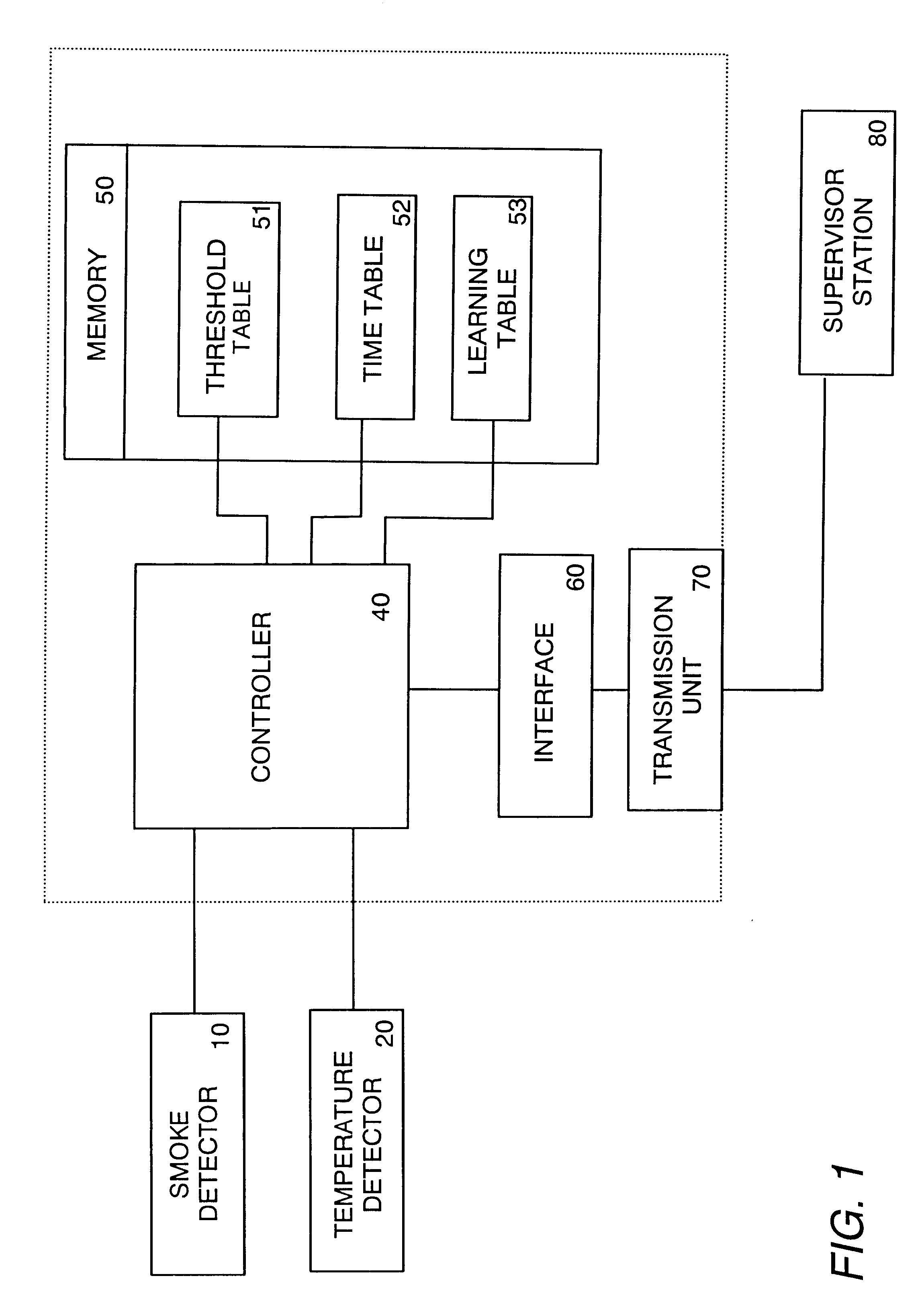Fire alarm system
a fire alarm and system technology, applied in fire alarms, fire alarm smoke/gas actuation, instruments, etc., can solve the problems of prior system not being able to reliably recognize the fire presence, still ineffective fire determination in a wide variety of environments, and system failure to recognize the fire presen
- Summary
- Abstract
- Description
- Claims
- Application Information
AI Technical Summary
Benefits of technology
Problems solved by technology
Method used
Image
Examples
Embodiment Construction
A fire alarm system in accordance with the preferred embodiment is discussed in detail with reference to the drawings. As shown in FIG. 1, the system utilizes a composite detector composed of a smoke detector 10 for detecting a smoke density (S) of a target environment and a temperature sensor 20 for detecting a temperature of the environment to provide, at every second, a temperature difference (.DELTA.T) between the current time and 168 seconds before, for example. The smoke detector 10 is of a known light scattering type providing the smoke density (S) in term of an attenuated light factor per unit length (% / m). The detected smoke density (S) and the temperature difference (.DELTA.T) are fed together with the current temperature (T) to a controller 40 where they are analyzed for decision of a true fire presence with reference to primary criteria as well as to various decision time periods given according to specific conditions of various possible environments. When the true fire ...
PUM
 Login to View More
Login to View More Abstract
Description
Claims
Application Information
 Login to View More
Login to View More - R&D
- Intellectual Property
- Life Sciences
- Materials
- Tech Scout
- Unparalleled Data Quality
- Higher Quality Content
- 60% Fewer Hallucinations
Browse by: Latest US Patents, China's latest patents, Technical Efficacy Thesaurus, Application Domain, Technology Topic, Popular Technical Reports.
© 2025 PatSnap. All rights reserved.Legal|Privacy policy|Modern Slavery Act Transparency Statement|Sitemap|About US| Contact US: help@patsnap.com



